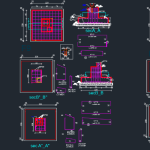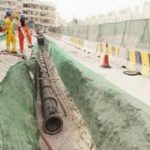Course Overview:
The “Earthquake Resistance in Structural Design” course is essential for engineers and designers to understand and apply principles and methods for designing earthquake-resistant structures and buildings. The course focuses on equipping participants with the ability to design structures that can withstand seismic forces by utilizing modern codes and structural analysis techniques. It will also cover the behavior of different materials and how to enhance their performance under seismic loads.
Course Objectives:
- Provide a comprehensive understanding of earthquakes and their impact on buildings and structures.
- Equip participants with the skills to design earthquake-resistant structures using modern engineering standards.
- Teach how to analyze the behavior of structures under seismic loads and apply dynamic analysis.
- Enhance knowledge of international and local building codes related to earthquake resistance.
- Offer strategies to improve building stability and minimize potential damage during earthquakes.
Training Content:
- Introduction to Earthquakes: Causes of earthquakes, how they are measured, and their impact on structures.
- Structural Behavior under Seismic Loads: How structures respond to seismic loads and the importance of structural design in improving performance.
- Seismic Codes and Standards: Overview of international and local codes, such as the American and European codes, and their application in design.
- Dynamic Structural Analysis: Methods of dynamic analysis and modern techniques for simulating earthquake effects on structures.
- Earthquake-Resistant Design Strategies: How to optimize load distribution and material strength to withstand earthquakes, including seismic isolation and damping systems.
- Case Studies: Real-world examples of earthquake-resistant buildings and lessons learned from past seismic disasters.
- Modern Construction Techniques: Applying advanced technology and materials in the design of earthquake-resistant structures.
Target Audience:
This course is designed for:
- Civil and structural engineers.
- Designers and architectural planners.
- Construction project managers.
- Civil and architectural engineering students.
- Technicians and contractors in the construction industry.
- Individuals interested in improving building safety in earthquake-prone regions.






